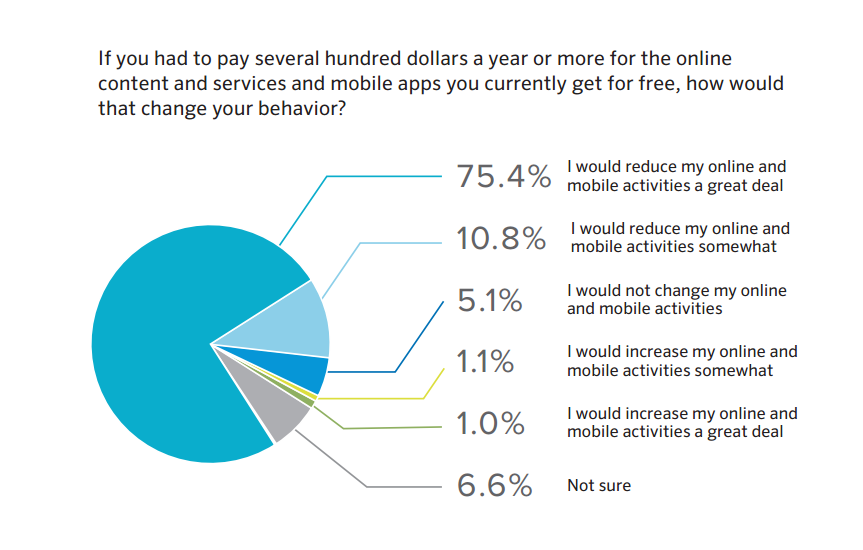Mixed messages from U.S. consumers on the value of Internet content means publishers and advertisers must fix their broken digital advertising models.
 They claim the content they consume does have significant value, yet more than 85% of U.S. adults surveyed prefer an ad-supported Internet rather than a paid content model. (Source: DCN Research Team)
They claim the content they consume does have significant value, yet more than 85% of U.S. adults surveyed prefer an ad-supported Internet rather than a paid content model. (Source: DCN Research Team)
“Americans assigned a value of nearly $1,200 per year to the free, ad-supported services and content they access via digital media and more than 85% said they preferred to keep the current model in place vs. paying for the same content and services directly,” writes Joe Mandese in MediaPost, citing the recent survey conducted for the Digital Advertising Alliance.
Those same respondents said “they would reduce the amount of time they spend online ‘a great deal’ if they had to pay to access those content and services,” Mandese continues. In other words, they claim it’s worth about $100 a month to them, but they wouldn’t likely pay for it.
If this small (just over 1,000 people) sampling is any indication, it means an ad-supported model isn’t objectionable, in spite of what we learned about ad blocker usage in recent months.
As Mandese continues, “80% of respondents said they found ads ‘useful,’ especially ones promoting movies and TV shows (43% of respondents citing), technology/devices (37%), clothing (36%), local restaurants (34%), groceries (33%), phone and Internet services (32%) and travel (30%).”
We get this. Print ads have always been a welcome and engaging part of the magazine content experience. Maybe it’s not the ads themselves that consumers are blocking; perhaps it’s the data-gathering tactics that cause that bloated mobile feeling that is fueling the ad blocking revolution.
In other words, don’t blame the consumer for ad blocking; they aren’t the ones who broke the bargain. Blame the publishers for how they are going about it.
Finally, we are starting to see some sanity in the digital ad model. Some are looking to the wisdom of print to help reinvent digital advertising, a move that could be well-received if the above data is indeed representative of the larger U.S. population. It’s certainly worth a try to give the consumer a decent experience.
